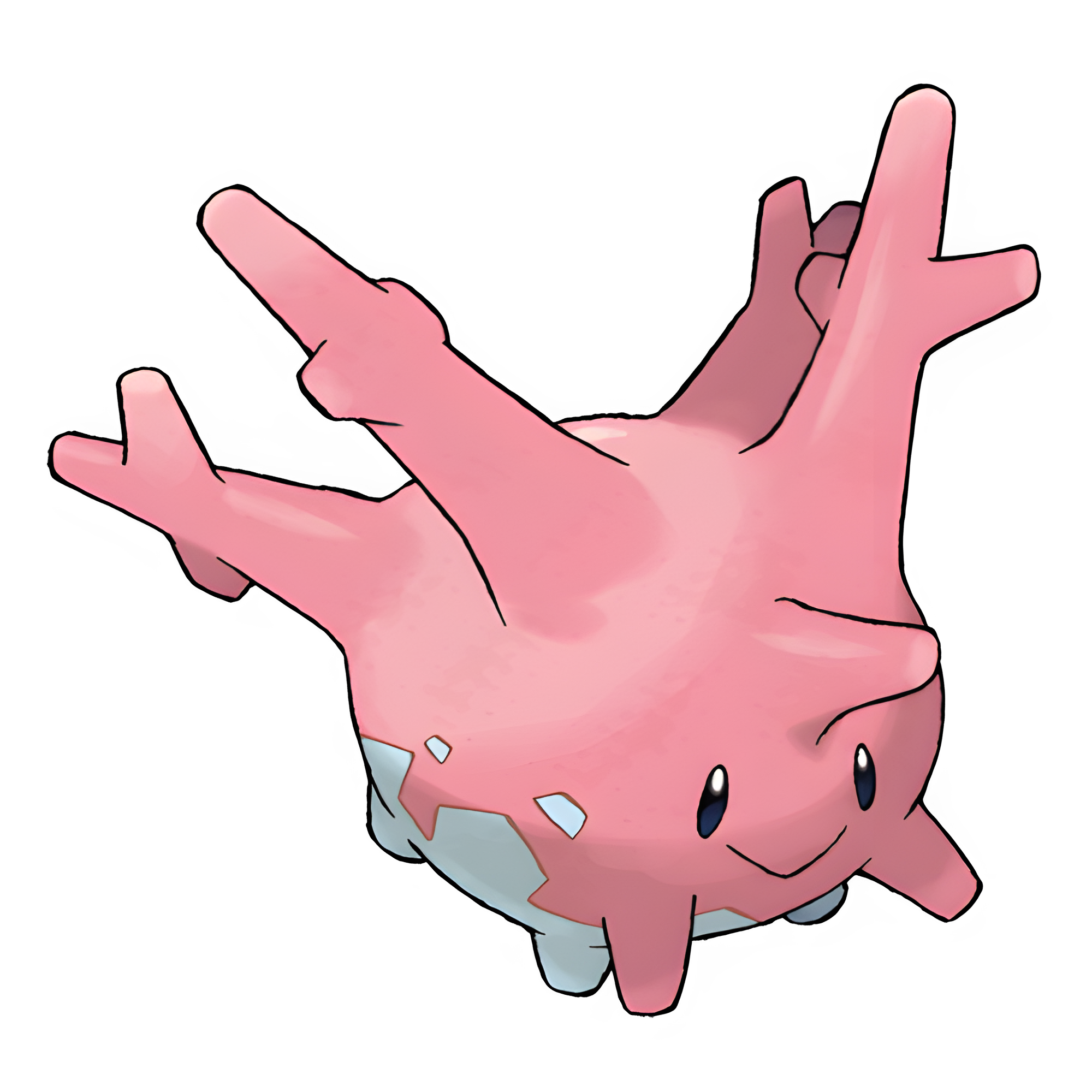Facts for Kids
Corsola is a Water/Rock-type Pokémon resembling a coral reef, known for its playful nature and ability to regenerate.
Overview
In Popular Culture
Conservation Status
Behavior And Ecology
Evolutionary History
Research And Studies
Trivia And Fun Facts
Habitat And Distribution
Physical Characteristics

Inside this Article
Climate Change
Personality
Coral Reef
Community
Pollution
Qwilfish
Pokémon
Adult
Coral
Did you know?
🌊 Corsola can often be found in warm seas, where it thrives on coral reefs.
💧 It is known to be a Water/Rock-type Pokémon.
🐚 Corsola can regenerate lost branches, making it resilient in its habitat.
🌐 It is often depicted as a Pokémon that represents the health of marine ecosystems.
🎨 Corsola has a pink body with blue tips on its branches, making it visually distinctive.
🧊 It is vulnerable to Grass-type moves, which can deal significant damage to it.
🔄 Corsola is known to have a peaceful nature and often avoids conflict with other Pokémon.
⚠️ Corsola is classified as a 'Coral' Pokémon in the Pokédex.
🌞 It evolves into Cacturne, but only in certain remakes of the game.
🍃 Corsola can learn various moves, including Water Gun and Rock Slide.
Introduction
It first appeared in the Pokémon series in 1996 in the game “Pokémon Gold and Silver.” Corsola is considered a Water and Rock-type Pokémon, which means it lives in oceans and can be strong against certain kinds of Pokémon. Corsola is known for its bright coral colors and its friendly personality! It evolves into a Pokémon called Cacturne. Corsola can be found in various regions, especially near the sea, where it thrives in sunny environments.
In Popular Culture
It appears in the animated series "Pokémon Journeys" and has its own Pokémon card. Many fans love Corsola for its cute appearance and friendly nature. In the Pokémon world, Corsola has appeared in various episodes where it helps team members on their adventures. Did you know that people even create fan art and merchandise of Corsola because they love it so much?
Conservation Status
Many coral reefs are threatened by pollution, climate change, and overfishing. This is why Corsola reminds us that we need to take care of our oceans and keep them clean! Organizations around the world work hard to protect coral reefs and educate people about their importance. By learning about Corsola, we can understand how to help real-life coral ecosystems too!
Behavior And Ecology
It plays joyfully in the water, showing off its coral-like body. Corsola uses its coral to provide a safe environment for small fish and other sea creatures. As a Pokémon, it has a special skill: it can create a seawater mist that helps its friends! 🌬
️ This ability can confuse opponents in battles, making it a clever little companion! Corsola also prefers to stay close to its fellow Corsola to create a beautiful underwater community.
Evolutionary History
However, it develops from Corsola to Cacturne, a more advanced Pokémon. Each Pokémon in the series has its evolution path that shows how they grow and change. Corsola's design is inspired by real-world corals, which have been around for millions of years. Just like in nature, Corsola's evolution reflects adaptation to underwater habitats!
Research And Studies
They observe how Corsola interacts with its friends and how it protects them. Some scientists focus on real coral reefs to learn how they adapt over time. By studying Corsola in the Pokémon world, they can see how important coral reefs are! Researchers hope to find solutions to help real corals, just like our little friend Corsola! Through Pokémon, we can learn about both fictional characters and important environmental issues.
Trivia And Fun Facts
When it gets scared, it can drop pieces of its coral to escape! This makes it tricky for predators to catch it. In Pokémon GO, players can find Corsola in places with lots of water or during special events. Fun fact: Corsola is named after “coral” because of how much it looks like a real coral reef! It also has a special move called “Recover,” which helps it heal during battles.
Habitat And Distribution
You can find it in tropical oceans around the Pokémon world, especially in regions like Johto and Hoenn. It enjoys shallow reefs where there is plenty of sunlight for photosynthesis. Unfortunately, Corsola's natural habitat can be affected by pollution and climate change, especially rising ocean temperatures. In real life, coral reefs around the world are struggling, just like Corsola.
Physical Characteristics
Its eyes are big and friendly, while its two adorable little antlers look like coral branches. Adult Corsola typically stands about 2 feet tall and weighs around 5.5 pounds. Wow, that's light! Its design is inspired by real coral reefs, which provide homes for many other ocean creatures. Corsola's unique shape helps it blend in with its surrounding. When it feels threatened, it can drop tiny pieces of its coral to escape from danger!

